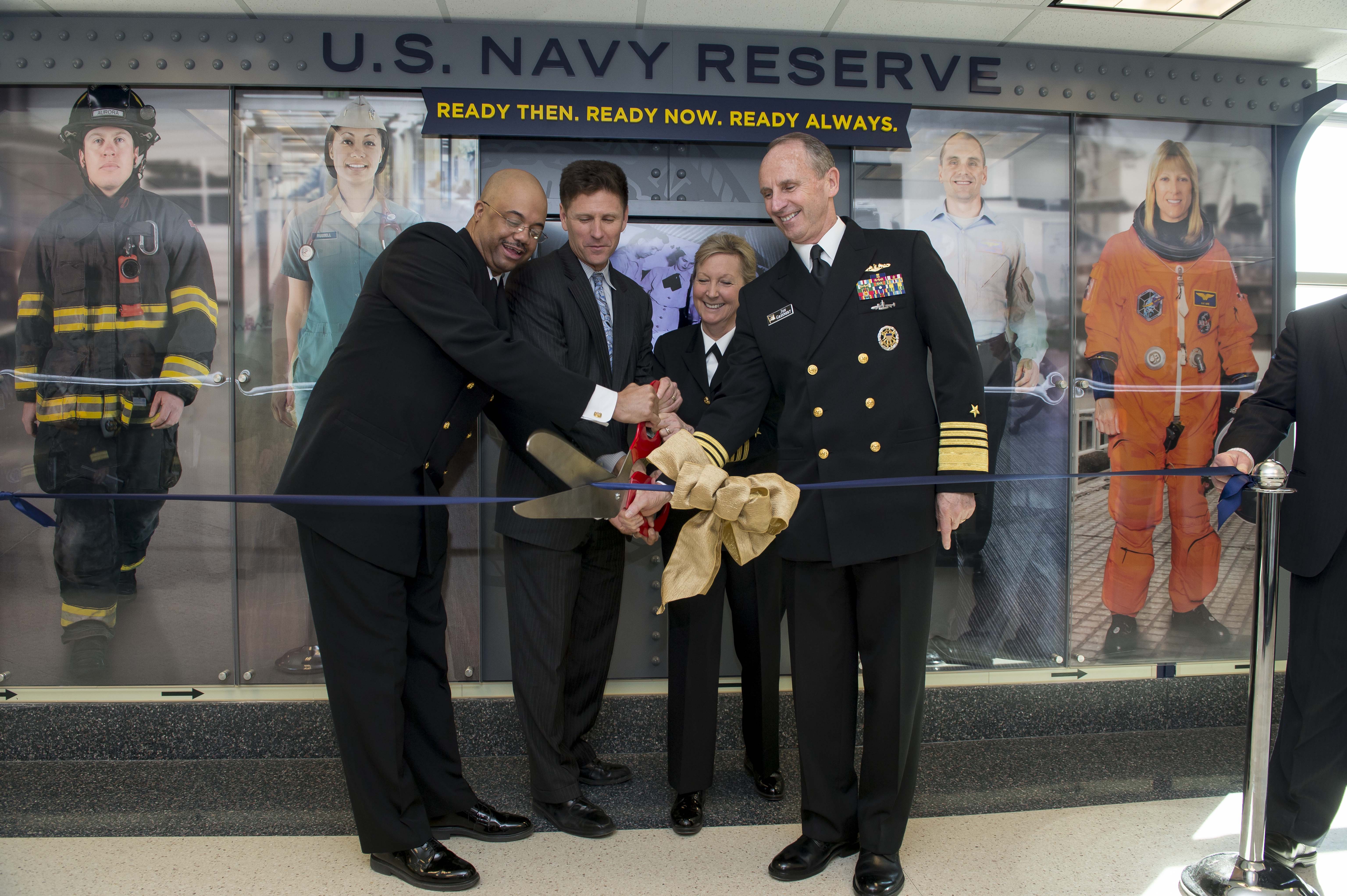
In a ceremony at the Pentagon on Monday, Chief of Naval Operations (CNO) Adm. Jonathan Greenert and Chief of Navy Reserve Vice Adm. Robin Braun began a year-long celebration of the U.S. Navy Reserve on its centennial.
During the ceremony Greenert, Braun, Navy Reserve Force Master Chief C.J. Mitchell and Assistant Secretary of the Navy for Manpower and Reserve Affairs Juan Garcia unveiled a new display in the Pentagon on a display celebrating the 100 year anniversary.
Begun on March 3, 1915 by an act of Congress, the Navy Reserve initially was composed of recently retired sailors who left the service with an honorable discharge. But with World War I looming on the horizon, a swift reorganization in 1916 allowed, “enrollment of citizens without prior service—including women—and the commissioning of officers below the rank of lieutenant commander,” wrote Vice Adm. Braun in the current issue of Proceedings.
“When the United States entered World War I in April 1917, 8,000 sailors were members of the Naval Reserve Force; 18 months later, more than 250,000 Reserve sailors were on active duty—including 11,000 women—making up more than half the wartime Navy,” she wrote.
In World War II, the first U.S. shots fired in anger were from reserve sailors from the destroyer USS Ward (DD-139) who sank a Japanese midget submarine two hours before the first waves of Mitsubishi Zeroes struck Pearl Harbor, Hawaii on Dec. 7, 1941.
About 45,000 sailors were in the reserve at the start of the war and that number grew to almost 3 million four years later and comprising almost 84 percent of the Navy.
“Five future U.S. presidents served as Reserve officers during World War II and 15 Reserve sailors received the Medal of Honor for heroic actions,” wrote Bruan.
The Korean War mobilized 170,000 reserve sailors; during the 1961 crisis in Berlin — that resulted in the erection of the Berlin Wall — 40 reserve ships were activated and the start of the Vietnam War included the activation of two Reserve Seabee battalions and Naval Reserve transportation squadrons.
After a dip in 1977 to a force of about 87,000 the Reagan administration’s 600-ship Navy effort plussed-up the force to 150,000.
During the first Gulf War, 20,000 Navy Reserve sailors were activated to support Operations Desert Shield and Desert Storm.
After the terrorist attacks of Sept. 11, 2001, the Navy Reserve supported the wars in Iraq and Afghanistan by contributing thousands of personnel to aviation and medical missions while the Navy’s individual augmentees (IA) to support missions from unmanned aerial vehicle (UAV) detachments to intelligence and logistics missions to civil affairs missions.
Still more reserve IAs deployed as part of Afghan provincial reconstruction teams and at prisoner detention facilities.
Moving ahead, the service is looking to continue cooperation with the active fleet. For example, Navy Reserve Lockheed Martin P-3C Orion squadrons could aid in the transition of units in the Western Pacific to Boeing P-8A Poseidon maritime surveillance platform.
“This centennial year provides the Navy Reserve with an opportunity to reflect on a century of service to our nation, thank those who have honorably served the force, and pay honor to those Reserve sailors who have selflessly given their lives in defense of our nation and its values,” concluded Braun in her Proceedings piece.
The service will continue the celebration of the U.S. Navy Reserve for the rest of the year.
Braun’s piece is included in a new collection of articles on the Navy Reserve, marking its 100-year anniversary from the U.S. Naval Institute.





